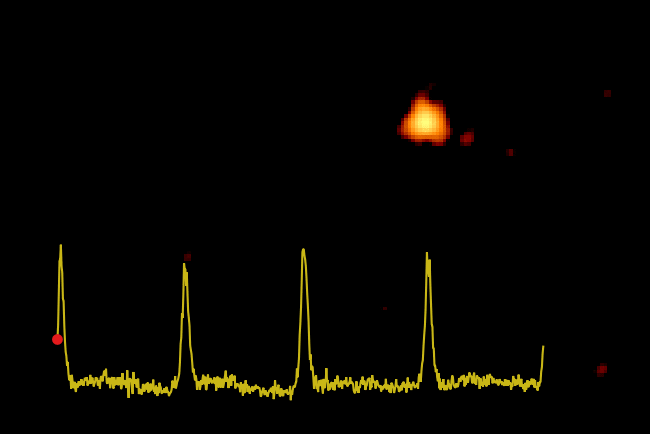A Distant Black Hole Brightens Every 9 Hours, and No One Knows Why
Every 9 hours, it suddenly gets brighter.

A black hole at the center of a distant galaxy is behaving like no other black hole astronomers have ever seen.
Every 9 hours, the black hole at the center of galaxy GSN 069, about 250 million light years away, sends a bright stream of X-rays toward Earth. It's an active black hole, so it's always gobbling up matter; in the process, that matter heats up and emits some light as it falls toward the event horizon around the singularity, the point beyond which no light or matter can escape. But in 2018, researchers who were using the European Space Agency's (ESA) XMM-Newton telescope realized that, at every peak of that 9-hour cycle, the GSN 069 black hole would get about 100 times brighter on the X-ray spectrum.
"It was completely unexpected," Giovanni Miniutti, an astronomer at Spain's Center of Astrobiology and lead author of a new paper on the black hole, said in a statement from ESA. "Giant black holes regularly flicker like a candle, but the rapid, repeating changes seen in GSN 069 from December onwards are something completely new."
Related: The First-Ever Close-Up of a Black Hole
The researchers didn't offer a definitive explanation for the phenomenon. But it's clear, they wrote, that there's some sort of gap or instability in the accretion disk, the ring of infalling material surrounding the black hole. Maybe something about the disk itself causes the matter to fall into the black hole in a regular pattern, or maybe something in its vicinity (perhaps another black hole) is disrupting the disk in a cyclic way, they suggested.
Although astronomers have never seen a pattern like this around another black hole, Miniutti and his team suggested that certain strange phenomena detected elsewhere in space might be related to this sort of pattern. In the past, astronomers have noticed black holes getting suddenly brighter for reasons they couldn't explain. It's possible, they suggested, that those brightenings were parts of similar patterns. The GSN 069 black hole is not as large as many of the black holes that form the core of a galaxy, the researchers noted. And the 9-hour period is likely in some respect tied to the rate at which the black hole spins. Larger black holes would take much more time to complete a full rotation, so if they were displaying a similar pattern, it might play out over weeks or months. And X-ray observatories rarely monitor a single black hole for that long.
The researchers aren't sure what physical phenomenon creates the regular flaring. But one possibility is the formation of a cloud of electrons very close to the black hole — a phenomenon astronomers already suspected might exist because of irregularities in the X-ray emissions of some other black holes.
Get the world’s most fascinating discoveries delivered straight to your inbox.
The paper was published today (Sept. 12) in the journal Nature.
- 9 Ideas About Black Holes That Will Blow Your Mind
- The 12 Strangest Objects in the Universe
- The Biggest Unsolved Mysteries in Physics
Originally published on Live Science.



